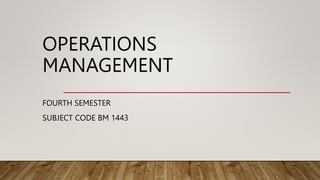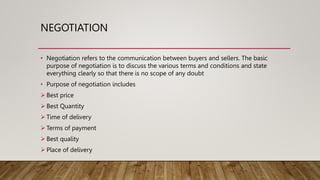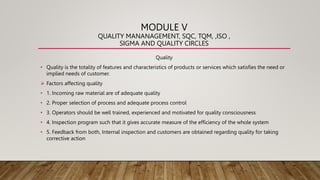This document provides an overview of operations management. It defines key terms like production management and operations management. It outlines the 5 Ps of operations management - product, processes, plant, programmes, personnel. It discusses the importance, objectives, and scope of operations management. It also describes different types of production systems like job shop production, flow shop, batch manufacturing, continuous production systems. It provides a system view of operations management and discusses operations strategy.


































































































































































































































![• Maximum Inventory = BS + EOQ
• Minimum Inventory= BS
• Average Inventory = [BS + (0.5) EOQ]](https://image.slidesharecdn.com/operationsmanagement-fullslides-240121120253-b95e8b87/85/OPERATIONS-MANAGEMENT-Full-Slides-pptx-227-320.jpg)



























































































































